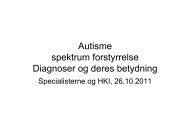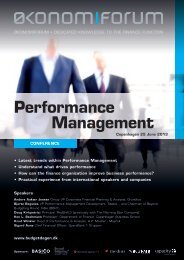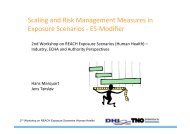Clusters are individuals - VDI/VDE-IT
Clusters are individuals - VDI/VDE-IT
Clusters are individuals - VDI/VDE-IT
Create successful ePaper yourself
Turn your PDF publications into a flip-book with our unique Google optimized e-Paper software.
Age<br />
Sh<strong>are</strong> of clusters<br />
having initiated many<br />
successful co-operations<br />
Sh<strong>are</strong> of clusters with<br />
highly assured financing<br />
150<br />
125<br />
100<br />
75<br />
Percentage of<br />
median value (%)<br />
Sh<strong>are</strong> of highly<br />
specialised clusters<br />
Impact<br />
on internationalisation<br />
activities of SME<br />
150<br />
125<br />
100<br />
75<br />
Percentage of<br />
median value (%)<br />
Sh<strong>are</strong> of clusters<br />
with high appearance<br />
in press / public<br />
Private<br />
financing rate<br />
50<br />
25<br />
0<br />
Numbers of<br />
members<br />
50<br />
25<br />
0<br />
Sh<strong>are</strong> of clusters<br />
with highly clarity<br />
of tasks & roles<br />
Sh<strong>are</strong> of cluster<br />
members within<br />
150 km<br />
Impact on business<br />
activities of SME<br />
Impact on R&D<br />
activities of SME<br />
Sh<strong>are</strong> of clusters<br />
with highly centralised<br />
governance structure<br />
Sh<strong>are</strong> of clusters having<br />
a dedicated of legal form<br />
Impact on R&D<br />
activities on research<br />
institutions<br />
Median value<br />
R&D driven clusters<br />
Industrial driven clusters<br />
Median value<br />
R&D driven clusters<br />
Industrial driven clusters<br />
Figure 8: Comparison of R&D- and industry-driven clusters in terms of<br />
structural factors<br />
Figure 9: Comparison of R&D- and industry-driven clusters in terms of<br />
output and impact<br />
Although research-driven and industry-driven clusters <strong>are</strong><br />
similar in terms of structural factors, they <strong>are</strong> different in<br />
terms of output and impact (see Figure 9). While both types<br />
of clusters <strong>are</strong> rather similar when it comes to the initiation<br />
of successful cooperation, they <strong>are</strong> very much different when<br />
it comes to the impact on cluster members. Industry-driven<br />
clusters have a bigger impact on R&D activities and business<br />
activities of SME than R&D-driven clusters have. In contrast,<br />
the impact on R&D activities of research institutions is bigger<br />
in R&D-driven clusters. This implies that the specific impact<br />
of a cluster on business or R&D activities of its members<br />
depends on the agenda setter: if companies set the agenda<br />
they benefit more, if research institutions or universities set<br />
the agenda they benefit more.<br />
Research-driven clusters show much lesser impact on business<br />
activities of SME than industry-driven clusters, while the<br />
difference is a little bit smaller when it comes to the impact<br />
on R&D activities. This can be explained by the specific focus<br />
of companies in research-driven clusters on product development.<br />
Companies in biotechnology clusters for example<br />
spend a lot of efforts on the development of drugs and less<br />
on sales and marketing because they first have to develop a<br />
product that meets pharmaceutical or other standards before<br />
they can market it. Often less attention is therefore paid<br />
to sales and marketing issues.<br />
The rather similar performance of both types of clusters in<br />
terms of their impact on internationalization activities of SME<br />
can be explained by the specific nature of research-driven<br />
clusters. Their company members often put less emphasis<br />
on sales and marketing than on product development which<br />
they often do in the context of international collaborations.<br />
Again, the biotechnology sector is a very good example for<br />
this pattern. <strong>Clusters</strong> in this <strong>are</strong>a <strong>are</strong> typically research-driven<br />
and their SME members typically either collaborate with international<br />
partners in R&D projects or do contract research<br />
for large pharmaceutical corporations that <strong>are</strong> headquartered<br />
abroad, e.g. in Switzerland. Data from the benchmarking<br />
backs this hypothesis, which can be developed also for other<br />
sectors such as micro, nano and optic or energy and envi-<br />
24

















